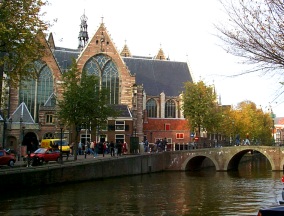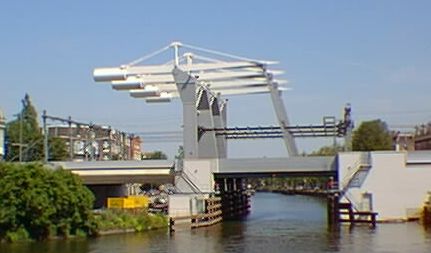
Amsterdam has hundreds of bridges including old and new drawbridges.
Check out Amsterdam, City of Bridges for more info and photos.


Amsterdam has hundreds of bridges including old and new drawbridges.
Check out Amsterdam, City of Bridges for more info and photos.
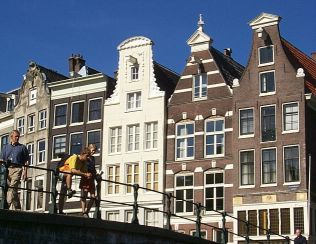
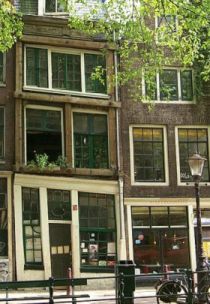 Much of Amsterdam’s charm comes from the architecture dating from the city’s “Golden Age”. Amsterdam goes back more than 700 years and a good portion of the central city is 200 to 550 years old. These beautiful old buildings have been wonderfully restored and preserved. Many older buildings awaiting restoration have serious structural problems! It’s truly remarkable when you realize most of them are built on stilts stuck into the mud. So many structures lean at odd angles that it’s rare to see a whole block in alignment. Many have had to have their supports replaced over the centuries to keep the buildings upright.
Much of Amsterdam’s charm comes from the architecture dating from the city’s “Golden Age”. Amsterdam goes back more than 700 years and a good portion of the central city is 200 to 550 years old. These beautiful old buildings have been wonderfully restored and preserved. Many older buildings awaiting restoration have serious structural problems! It’s truly remarkable when you realize most of them are built on stilts stuck into the mud. So many structures lean at odd angles that it’s rare to see a whole block in alignment. Many have had to have their supports replaced over the centuries to keep the buildings upright.
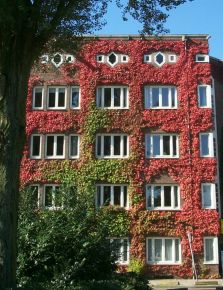 At the end of W.W.I, the Amsterdam School architects designed large housing projects to replace slums and to expand the city. These buildings incorporated larger floor plans with balconies overlooking huge central gardens. Many of the design elements incorporated a progressive attitude towards apartment life allowing for more light and air and taking into account human ergonomics.
At the end of W.W.I, the Amsterdam School architects designed large housing projects to replace slums and to expand the city. These buildings incorporated larger floor plans with balconies overlooking huge central gardens. Many of the design elements incorporated a progressive attitude towards apartment life allowing for more light and air and taking into account human ergonomics.

These block sized streamlined brick structures also had some unique design elements such as busts of famous people and unusual doors. Large windows sometimes at odd angles or in weird shapes make each building unique. Visit Amsterdam School Architecture for more about this celebrated design movement.
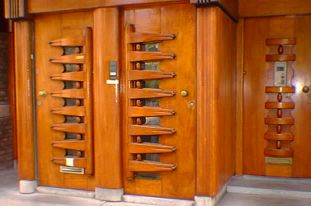
With it’s masterful art deco decor, the Tuschinski Theater is a landmark of the period. Now a very popular movie venue, it’s worth a visit just to gawk at the interior. A great illustrated reference with numerous walking tours of Amsterdam is: Eyewitness Travel Guides: Amsterdam. I highly recommend it!
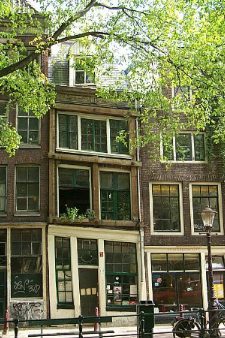
Old canal houses are very popular in Amsterdam. Some of these narrow buildings are 500 years old. They lean at very odd angles, adding a certain charm to the city. Once taxes were assessed by the size of the frontage, forcing the thrifty Dutch to build their homes very narrow. Some canal houses are barely wider than the front door! Amsterdam now has strict regulations prohibiting new construction in the historic area (practically the whole central city). So ongoing renovations keep the houses livable. Restored canal houses can be worth millions of dollars.
